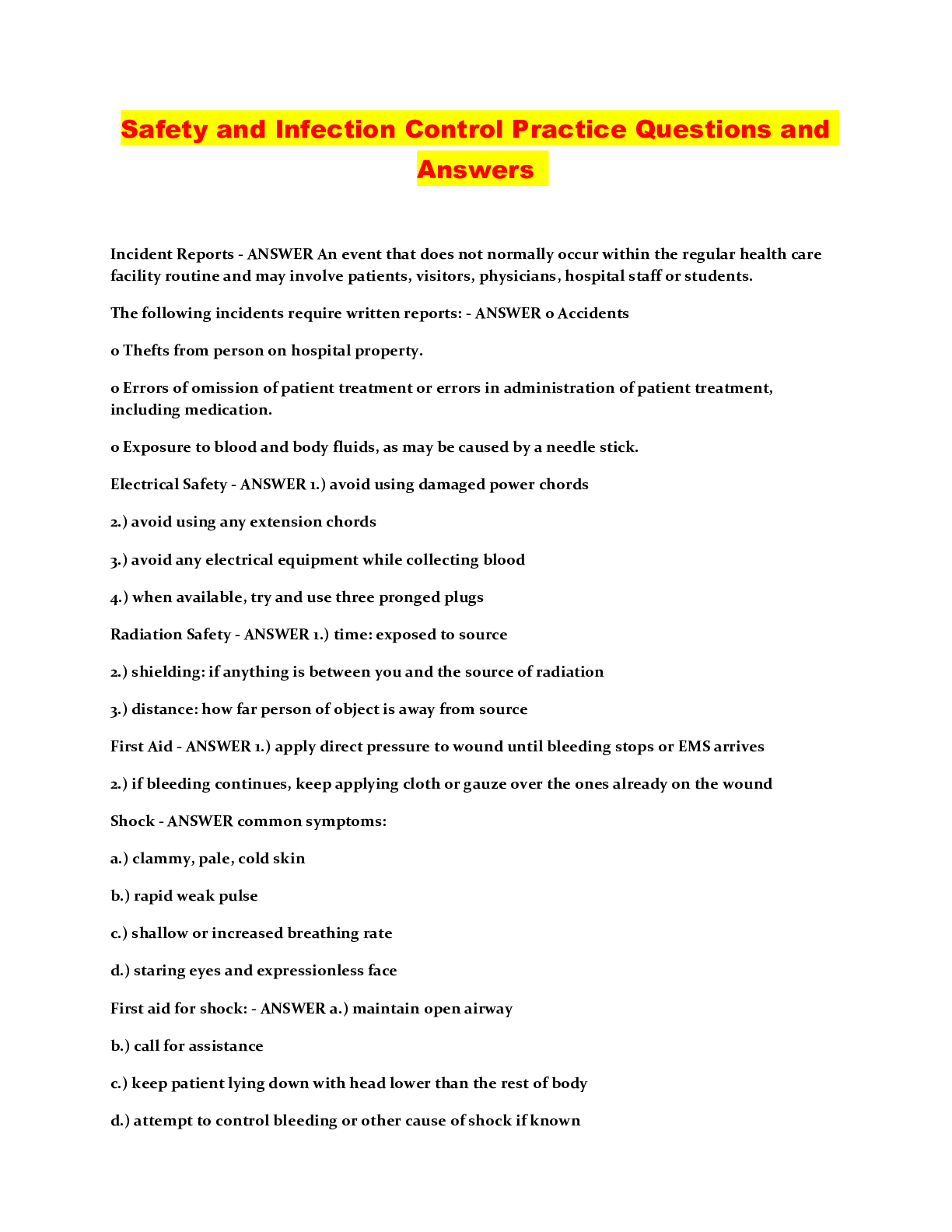*NURSING > QUESTIONS & ANSWERS > The Safe & Effective Care Environment: Safety & Infection Control Practice Questions AND RATIONALE ( (All)
The Safe & Effective Care Environment: Safety & Infection Control Practice Questions AND RATIONALE (GRADE A ASSURED)
Document Content and Description Below
The Safe & Effective Care Environment: Safety & Infection Control Practice Questions 1. Your client has an allergy to both penicillin and latex. Which of these pathophysiological facts should you... apply when you are providing to this client? A. The sensitizing dose of penicillin can lead to anaphylaxis. B. The second dose of penicillin can lead to distributive shock. C. You should be aware of the fact that about 10% of the population has an allergy to both penicillin and latex. D. You should be aware of the fact that about 20% of the population has an allergy to both penicillin and latex. 2. Which of these clients is at greatest risk for falls? A. A 77 year old female client in a client room that has low glare oors. B. An 87 year old female client in a client room that has low glare Coors. C. A 27 year old sedated male client. D. A 37 year old male client with impaired renal perfusion. . 3. Which statement about environmental safety is accurate? A. The nurse should advise clients in a smoke Ulled room to open the windows. B. The rst thing that the nurse should do when using a Tre extinguisher to put out a small re is to aim the re extinguisher at the base of the re. C. Rapidly lift and move a client away from the source of the Vre when their slippers are on re. D. The home health care nurse should advise the client that the bestre extinguisher to have in the home is an ABC Kre extinguisher. 4. Which of the following is considered an internal disaster? A. A tornado that has touched down on the healthcare facility B. A severe cyclone that has destroyed nearby homes C. A massive train accident that brings victims to your facility D. An act of bioterrorism in a nearby factory 5. After your assessment of your client and the need to transfer your client from the bed to the chair, what is the best and safest way to transfer this paralyzed client when you suspect that you will need the help of another for the client’s rst transfer out of bed? A. Use a slide board. SHARES B. Use a mechanical lift. C. Use a gait belt. D. Notify the client's doctor that the client cannot be safely transferred by you. 6. You are serving as the preceptor for a newly graduated nurse. As you observe the new nurse for their application of body mechanics principles into client care, you observe that the nurse spreads her legs apart during a transfer with a client. What should you do? A. Advise the nurse that the legs must be close together for stability during lifting and transfers. B. Advise the nurse that the legs should be one in front of the other and not spread apart during a transfer. C. Validate the nurse’s competency in terms of the application of body mechanics principles during a transfer. D. Validate the nurse’s competency in terms of the application of ergonomics principles during a transfer. 7. You are serving as the supervisory nurse for a home healthcare agency in the community. You are doing an admission assessment for a 76 year old male client who resides with his elderly wife. Which of the following assessments would indicate that the couple needs some education relating to home safety? A. The client has refrigerated foods labelled with an expiration date. B. You assess that the home is free of scatter rugs that many use to protect the feet against hard oors. C. The client uses the FIFO method for insuring food safety. D. The client assures you that the smoke alarm batteries are replaced annually to insure that they work. 8. Which characteristic of carbon monoxide makes it a particularly dangerous gas? A. It is clear? B. It is damaging to the lungs. C. It is damaging to the spleen and the liver. D. It leads to the over production of hemoglobin. which is the result of this deadly gas and not damage to the lungs. This oxygen absorption de cit can lead to serious tissue damage and death. For these reasons, home carbon monoxide alarms are recommended. These dangers are associated with deoxygenation and not splenic or hepatic damage or the over production of hemoglobin. 9. The lack of necessary supplies and equipment to adequately and safely care for patients is an example of a (n): A. Sentinel event. B. System variance. C. Adverse eTect. D. Provider variance. 10. The rst thing that you should do immediately after a client accident is to: A. Notify the doctor. B. Render care. C. Assess the cleint. D. Notify the nurse manager. 11. You have collected, aggregated and analyzed data which re ects the frequency of your sta returning medical equipment to the appropriate department because the sta members thought it was too unsafe to use. After the experts in the medical equipment inspect and test the equipment they report back to you, as the nurse manager, whether or not the equipment was indeed unsafe. This data indicates that 83% of the returns that were made by your sta were deemed safe and operable. What should you do? A. Counsel the sta about their need to stop wasting the resources of this department. B. Check the equipment yourself to determine the accuracy of this equipment department. C. Ignore it because everyone can make an innocent mistake. D. Plan an educational activity about determining what equipment to send for repairs. 12. Which of the following is an essential component for insuring that medical equipment is being used safely and properly by those who you supervise? A. Education and training on all pieces of equipment B. Pilot testing new equipment C. Reading all the manufacturer’s instructions D. Researching the equipment before recommending its purchase SHARES 13. Which of the following security concerns is also a sentinel event that must be reported? A. A possible vulnerability of the facility’s information technology to hacking B. The assisted suicide of a client in your facility by the spouse of the client C. Vulnerability to computer hacking D. Potential information theft 14. Which of the following is an e ective security plan that you may most likely want to consider for implementation within your facility? A. Training all nurses to serve as a part of a security response team B. Training all clerical sta to be a part of a security response team C. The restriction of visitors in a special care area D. Bar coded client identiNcation bands to insure proper identi cation 15. Select the basic sterile asepsis procedures that are accurate. Select all that apply: A. Sterile items ONLY are placed on the sterile eld. B. The nurse must keep the sterile eld below waist level. C. Coughing or sneezing over the sterile eld contaminates the sterile eld. D. The nurse must maintain a 1/2 inch border around the sterile Keld that is not sterile. E. Moisture and wetness contaminate the sterile Qeld. F. Sterile masks are used by staC and the client when a sterile eld is being set up and/or maintained Correct Response: A, C, E Sterile items ONLY are placed on the sterile eld; coughing or sneezing over the sterile eld contaminates the sterile eld; and all moisture and wetness contaminate the sterile eld. Some of the other principles that are applied to setting up and maintaining a sterile eld include keeping the sterile eld above the waist level and preventing coughing or sneezing by professional sta and the client during the set up and during the maintenance of the sterile eld. If there is a danger that anyone may cough or sneeze over the eld, the professional staV and/or the client should don a mask to prevent contamination. Lastly, a one inch border, not a ½ border that is not sterile is maintained around the perimeter of the sterile Veld. 16. Select the term which is most completely and accurately paired with its de nition. SHARES A. A physical restraint: A physical restraint is a manufactured device that is used, when necessary, to prevent falls. B. A physical restraint: A physical restraint is any mechanical device, material, or equipment attached to or adjacent to the resident’s body that the individual cannot remove easily which restricts freedom of movement or normal access to one’s body. C. A chemical restraint: A chemical restraint is a drug used for sedation to prevent falls. D. A chemical restraint: A chemical restraint is a drug used for discipline or convenience and not required to treat medical symptoms. 17. Which of the following is NOT an essential component of a restraint order? A. Informed consent for the restraint B. The reason for the restraint C. The type of restraint to be used D. Client behaviors that necessitated the restraints 18. Place the phases or stages of the in ammatory response in the correct sequential order, do NOT SHARES include any phases that is NOT part of the in ammatory process. 1. The vascular phase 2. The prodromal phase 3. The incubation phase 4. The initial injury 5. The exudate phase 6. The convalescence phase A. 4,2,1 B. 4,1,5 C. 4,5,1 D. 4,2,5 [Show More]
Last updated: 2 years ago
Preview 1 out of 11 pages
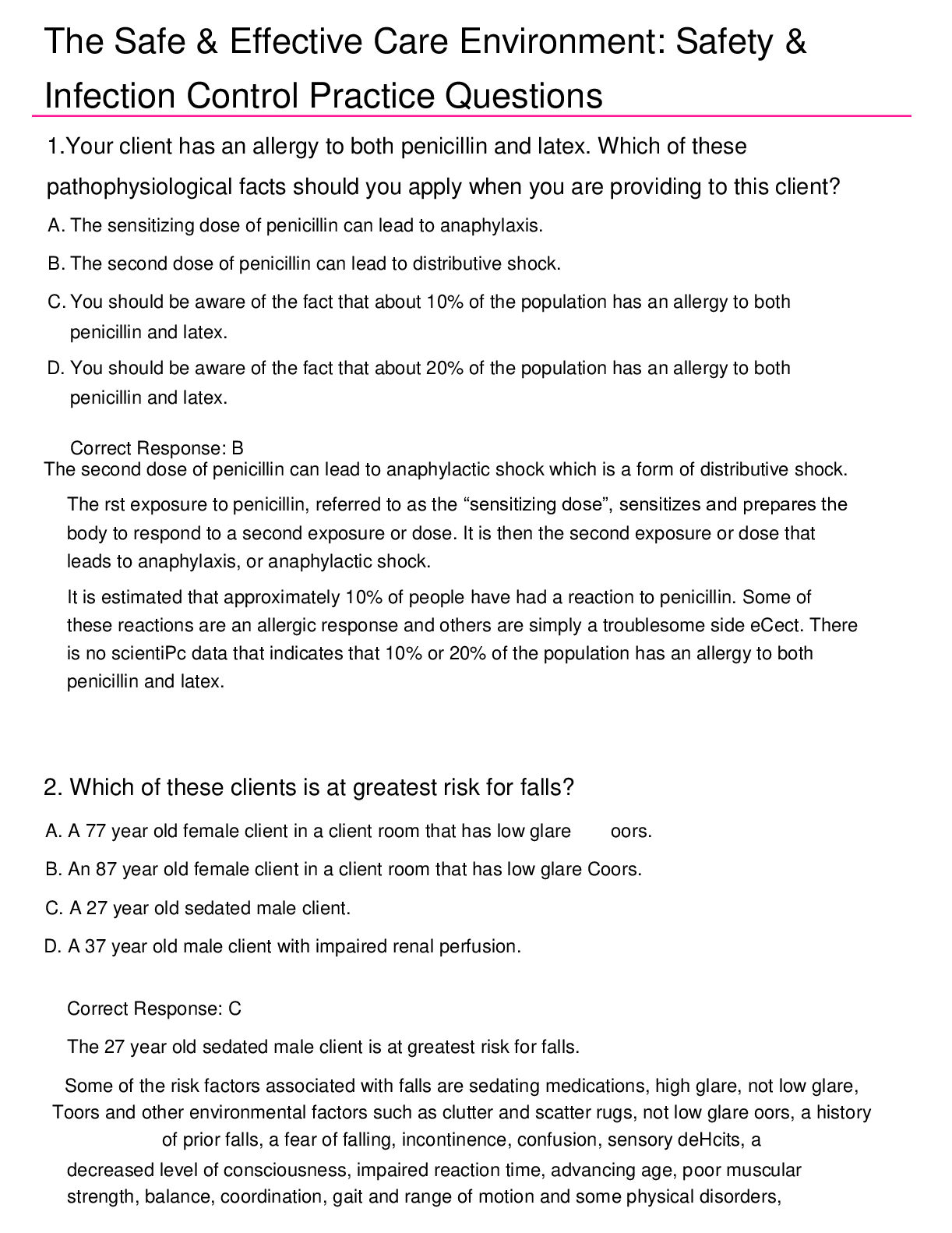
Buy this document to get the full access instantly
Instant Download Access after purchase
Buy NowInstant download
We Accept:

Reviews( 0 )
$12.00
Can't find what you want? Try our AI powered Search
Document information
Connected school, study & course
About the document
Uploaded On
Apr 12, 2020
Number of pages
11
Written in
Additional information
This document has been written for:
Uploaded
Apr 12, 2020
Downloads
0
Views
115

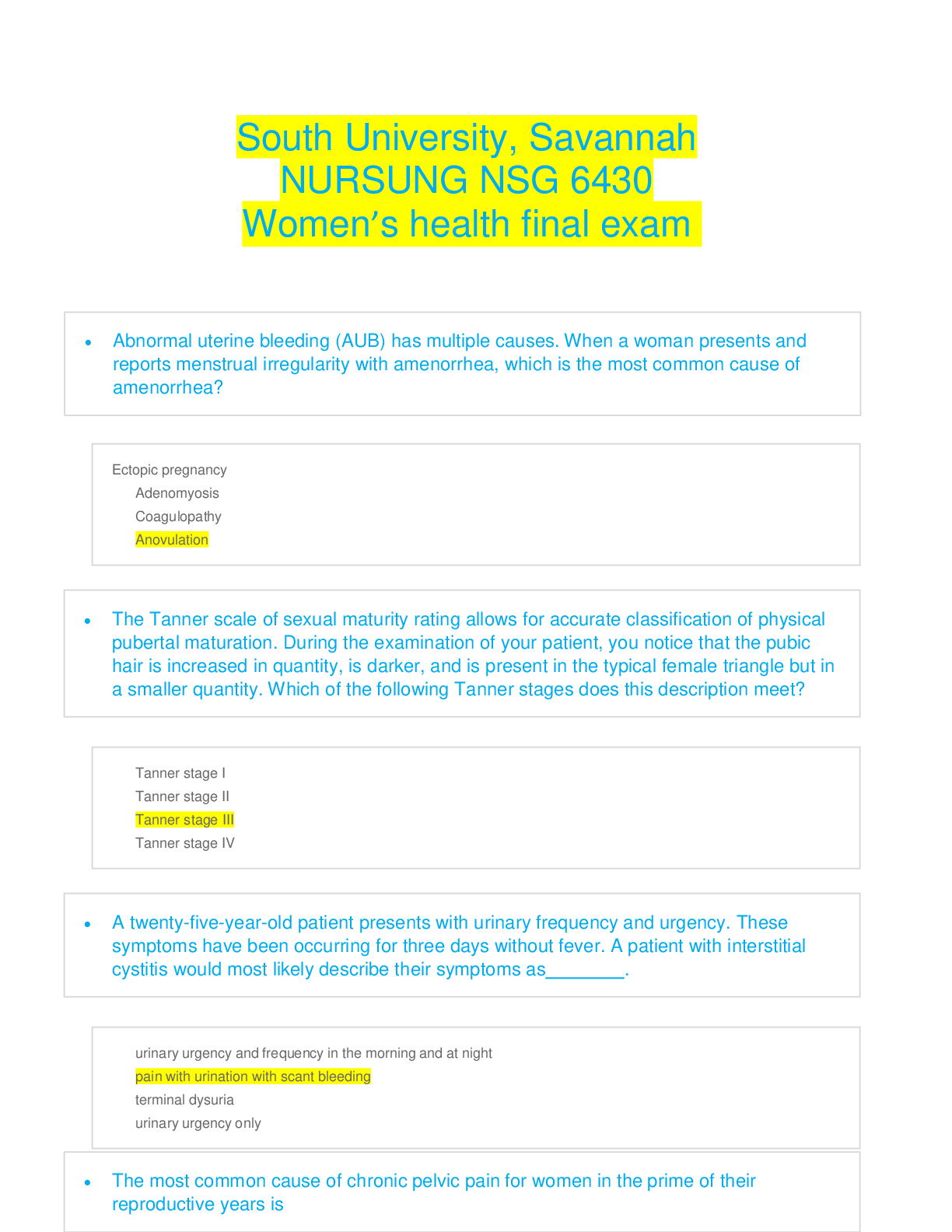

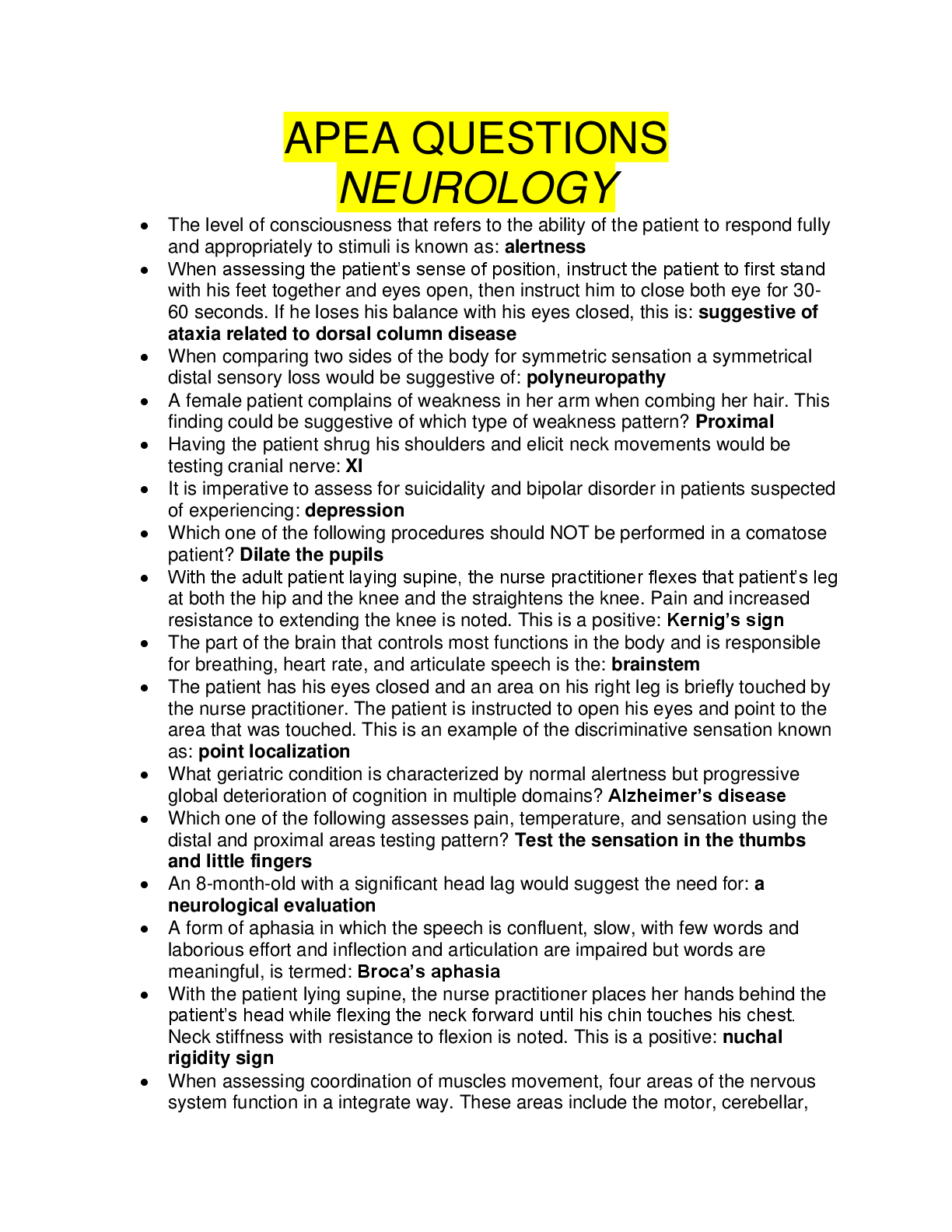

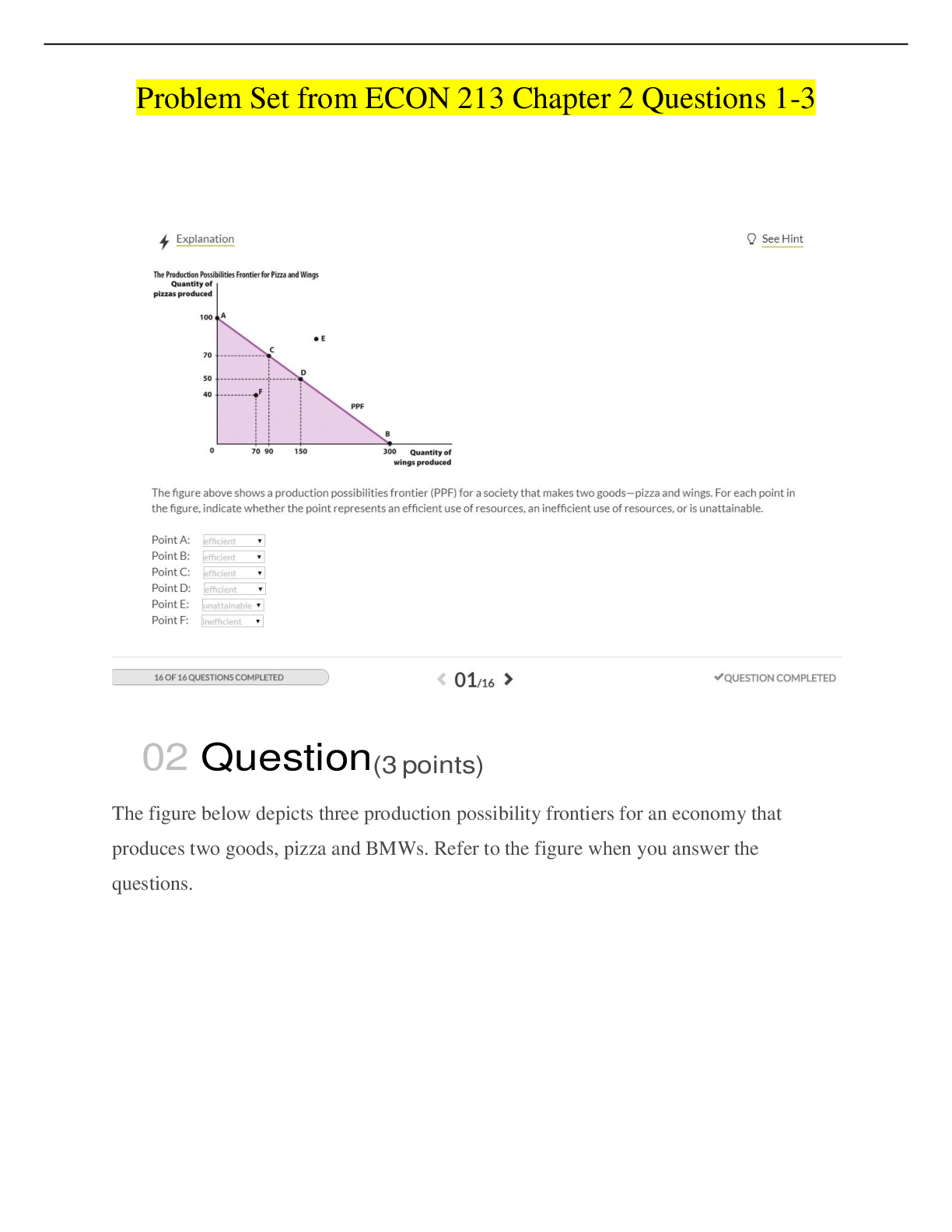
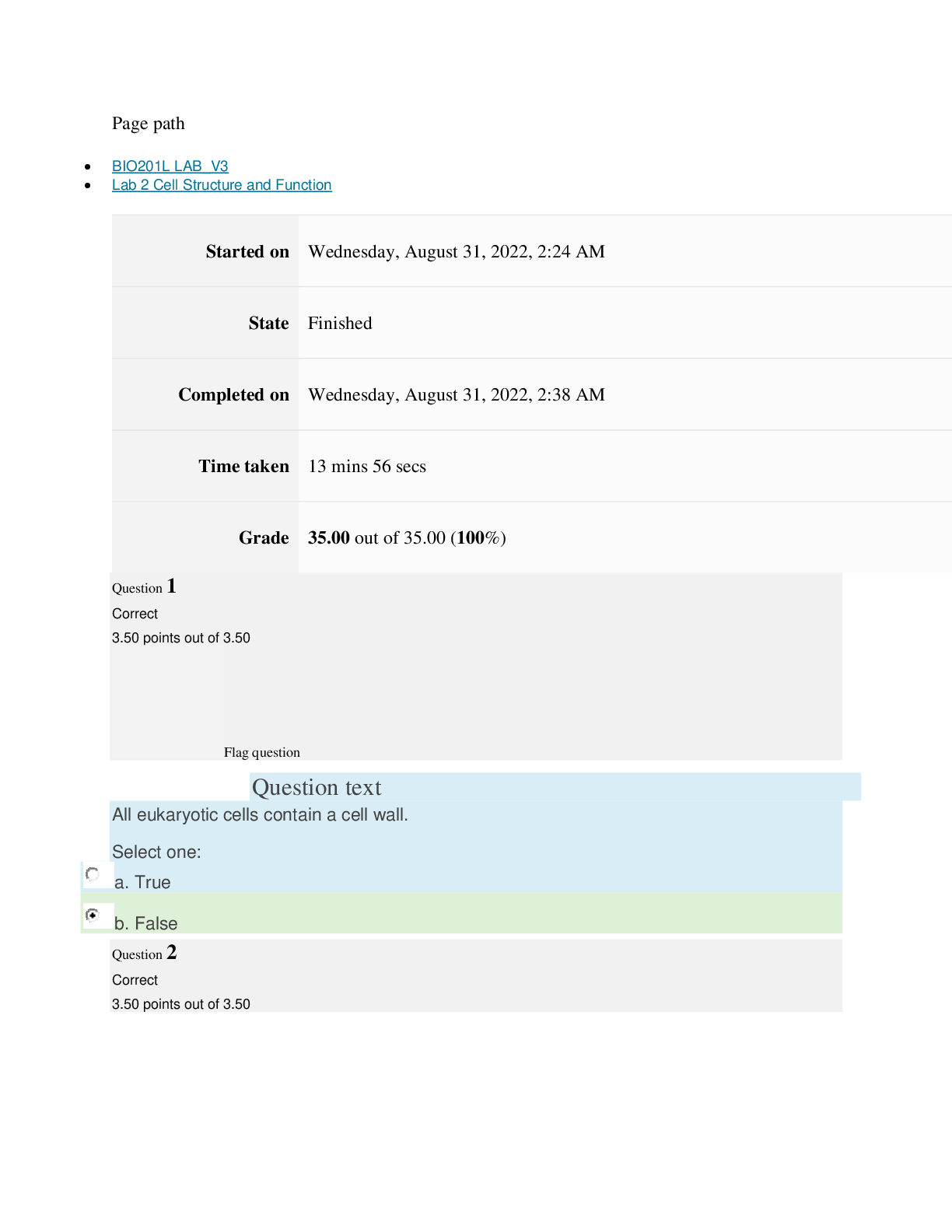

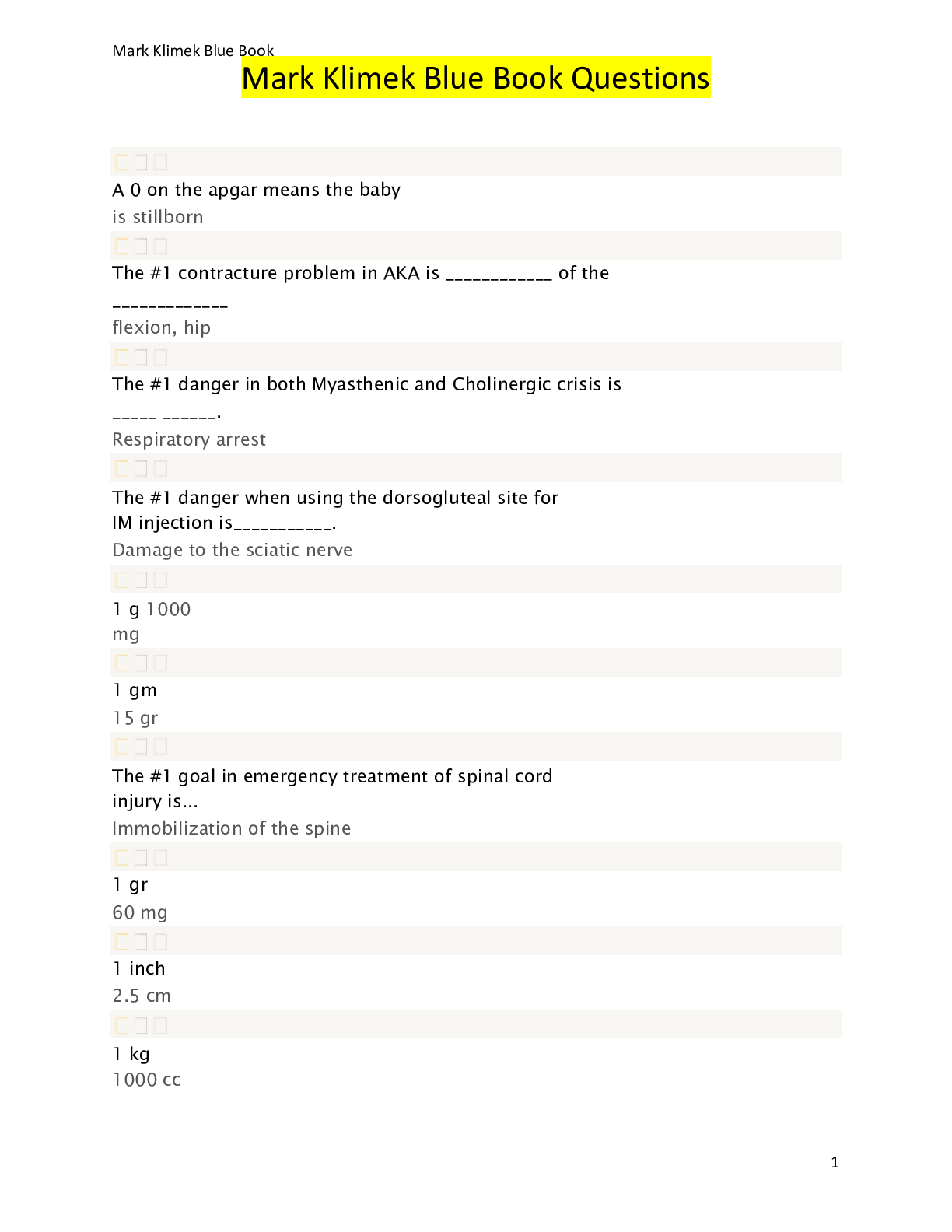

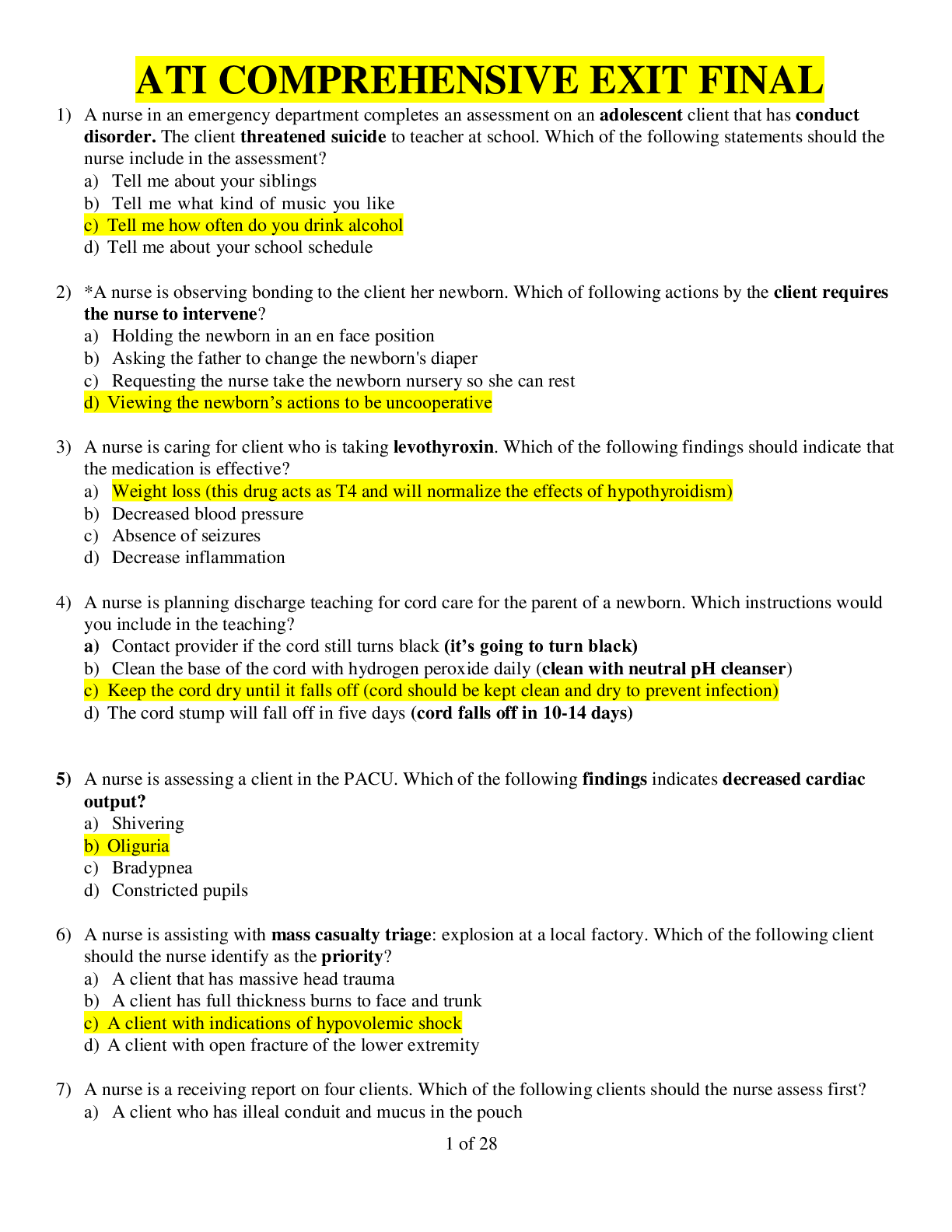

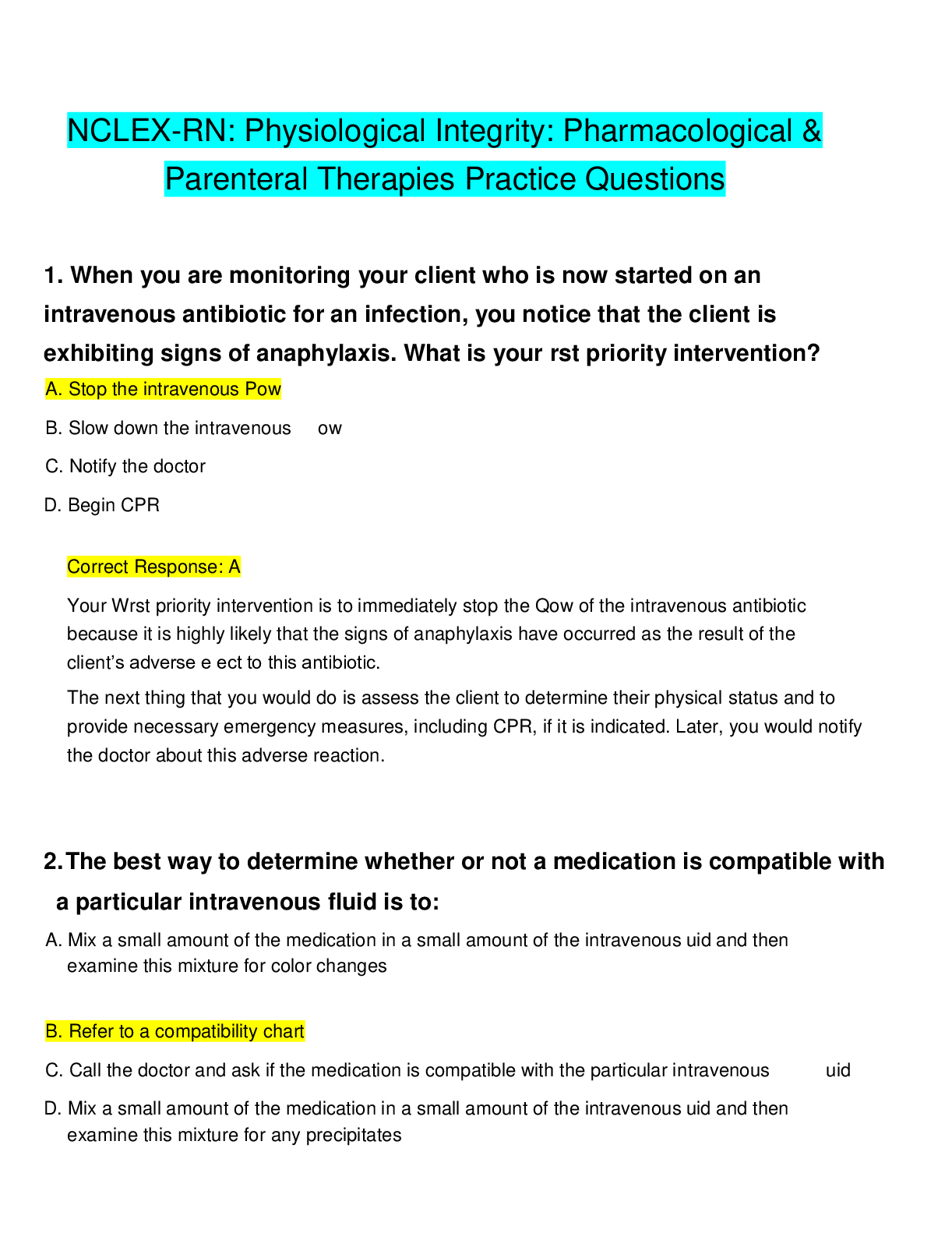
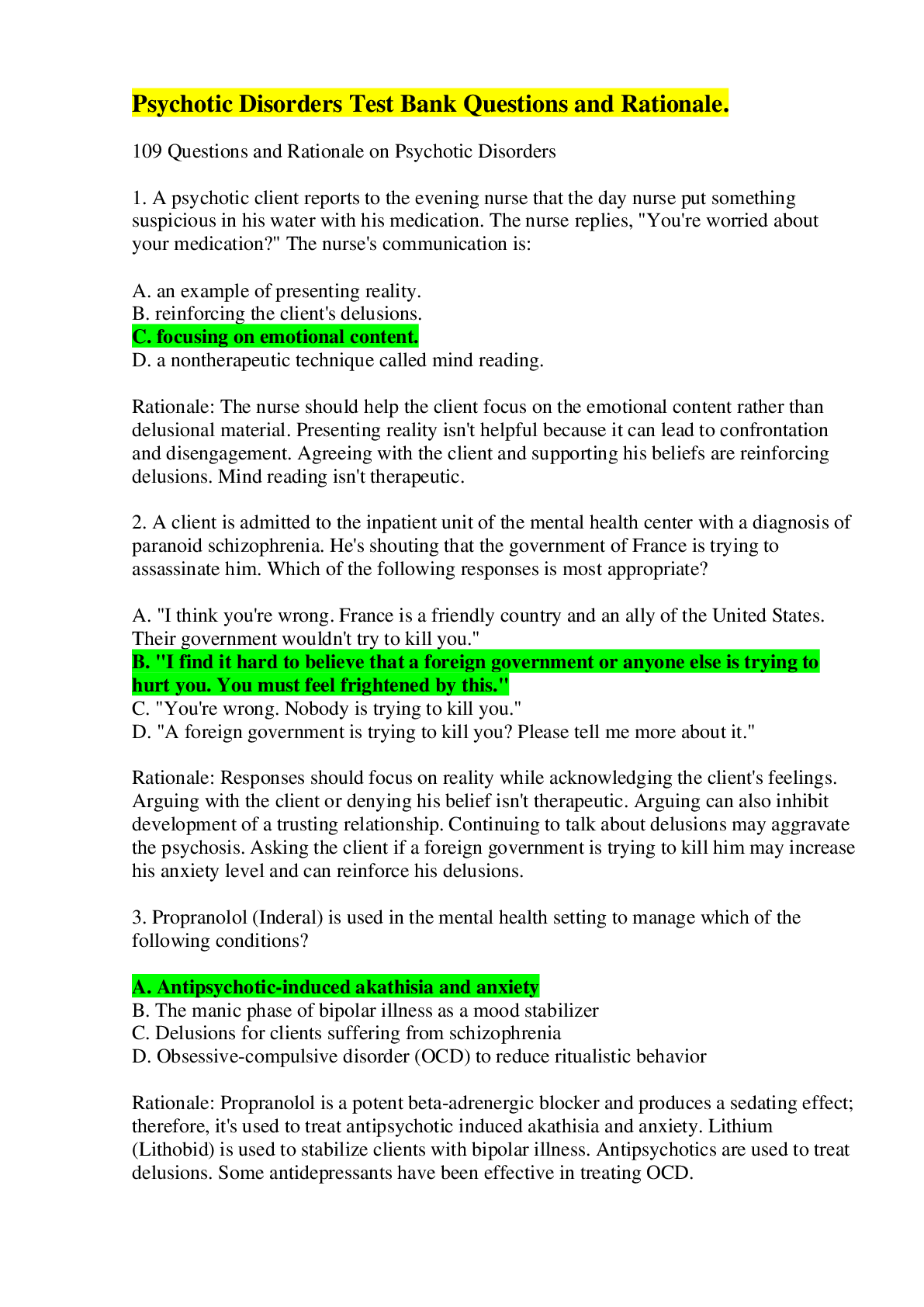



.png)

